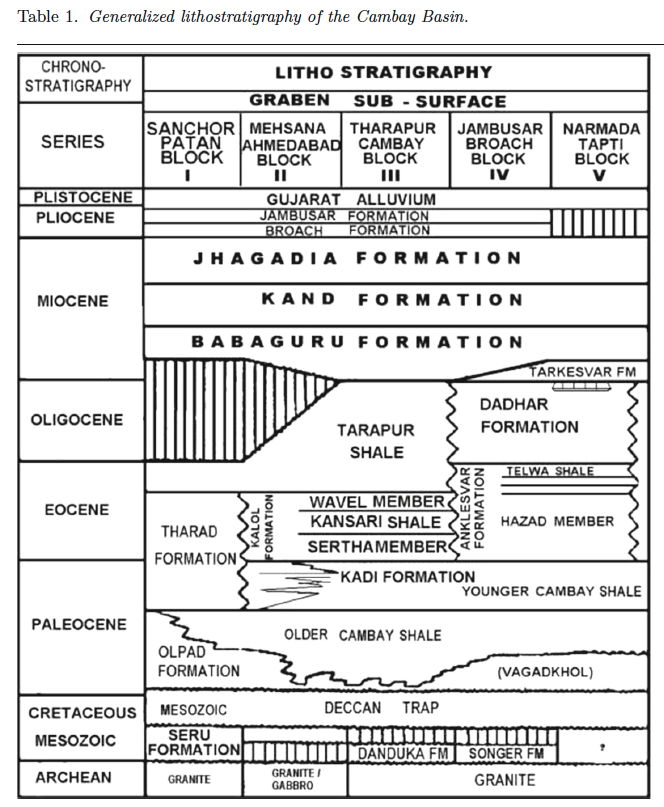Kand Fm
Type Locality and Naming
OUTCROP: Named after Kand village. Outcrop at Jhagadia-Tarkesvar and Well Broach-6 (1952-2430 m). 478 m thickness in Well Broach-6 [Original Publication: Sudhakar, R. and Roy, T.K. (1959) Progress report on the geology of the tertiary formations of Broach and Surat Districts (1958-59). Unpublished ONGC report.]. Surface name was proposed by Sudhakar and Roy (1959) was extended to the subsurface by Chandra and Chowdhary (1969). Reference wells: Well Pakhajan-1 (depth interval 1954 to 2593 m), Anklesvar-1, interval 388 to 490 m, Cambay-40, interval 885 to 1190 m, Paliyad-1, interval 617 to 795 m, Jharedi-1, interval 447 to 658 m.
Lithology and Thickness
Claystone. In southern part of the basin in Pakhajan-1, the formation consists of mainly soft claystone with occasional bands of coarse- to medium-grained sand/sandstone. In Cambay-40, clays and claystone with minor sand/sandstone occur. In the outcrop near Kand village, some highly fossiliferous calcareous bands also occur. Thickness in outcrop varies from 150-400 m and in subsurface it is 278 m.
[Figure 2: Generalized stratigraphy of the Cambay Basin. (from Jaiswal and Bhattacharya, 2018, J.EarthSyst.Sci., 127:65)]
Relationships and Distribution
Lower contact
The lower boundary is conformable with the Babaguru Fm. [However, on Dr. Raju's chart, it is conformable on Tarkeswar Fm; and the Babaguru Fm is only in the central segments of this basin (and mainly coeval with the Kand Fm).]
Upper contact
The upper boundary is conformable with Jhagadia Fm (although Jhagadia entry said "unconformable" – used here)
Regional extent
Entire basin
GeoJSON
Fossils
Occurrence of Miogypsina sp., Globoquadrina altispira, Austrotrillina howchini, Lepidocyclina sp., Asterorotalia gaimardi
Age
Depositional setting
Additional Information
